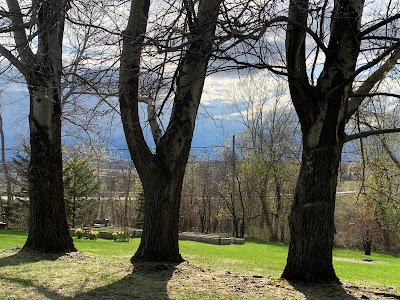 |
| Satellite photo shows the immense storm system spreading bad weather from southern Canada, through the Great Lakes, down the entire East Coast on into Florida. |
I'm also impressed by the wide variety of often dangerous weather it's creating.
Tornadoes, floods, high winds, coastal flooding and heavy snow are all part of this storm, affecting areas from the Upper Peninsula of Michigan to Florida.
The storm will roar right over Vermont tonight. But aside from some local instances of strong, gusty winds and enough rain to make a few rivers come close to flood stage, we should be pretty much OK. More on that in a moment.
Let's visit a few of the hot (and cold!) spots with this storm.
FLORIDA
The vast storm's cold front is pushing into Florida and causing a bout of severe weather. A tornado in Palm Beach, Florida yesterday tossed cars around and damaged buildings. The threat continues all day today, and eventually extends northward to the Carolinas.
UPPER MICHIGAN
The circulation around this storm goes all the way up and off the East Coast into southeastern Canada and then southward into the western Great Lakes.
As this happens, cold air is getting pulled into the circulation. So is moisture. Combined with water off of Lake Superior, six to as much as two FEET of snow are in the forecast for the northern Michigan and far northern Wisconsin.
This isn't the latest snow they've ever gotten, but it's a pretty big winter storm for so late in the season. That cold air will eventually wrap all the way around to the central Appalachians, so higher elevations of West Virginia could also end up with several inches of snow.
MID-ATLANTIC
Parts of New Jersey, Delaware and Maryland have received two to as much as five inches of rain already, and another shot of heavy rain is forecast to come through today. Water is already high, so it won't take much to set off some flooding.
On top of all that, stiff east winds are pushing waters onto shore, so a coastal flood advisory is up for many of these areas during high tides today.
NEW HAMPSHIRE/MAINE
A fire hose of moisture with this storm will come in off the Atlantic Ocean tonight and slam into the White Mountains and the mountains of western Maine. The moisture train, forced to rise up the slopes of those mountains, will unleash torrential rains.
As much as five inches of rain could fall on this region by Monday morning. Brooks coming off the steep slopes of those mountains can easily become raging torrents. I'd be a bit nervous if I lived right next to a river in much of New Hampshire and southwestern Maine.
VERMONT
Compared to a lot of areas, the Green Mountain State is in a bit of a sweet spot to avoid the worst of the weather. Still, we have some minor hazards to look forward to. And then, an extended period of cool, showery weather lasting all week.
We will be subject to that fire hose of moisture coming off the Atlantic, but it will have lost some of its steam by the time in reaches as far inland as Vermont. Still, the eastern slopes of the Green Mountains could easily see one to a much as a little more than two inches of rain by tomorrow.
This will trigger rises in the rivers and maybe some low land wet spots. But it doesn't look like it will be quite enough to create a lot of flooding. Still, some rivers could go to bank full, and perhaps a couple low lying roads could get covered by water.
As the blast of air rises up and over the Green Mountains this evening and overnight, it will gain momentum flowing down the west slopes of the Green Mountains later today and tonight. Most of the wind won't be too bad, with highest gusts in the 40 to 45 mph range likely in much of western Vermont.
However, there will probably be some isolated pockets that go way above that, with a very few places possibly going over 60 mph. These are the usual suspect places. Like very localized spots near Danby, Mendon, Ripton, Hanksville, and pockets of Underhill, Cambridge, perhaps up toward Bakersfield.
I expect a few power outages, but nothing super widespread.
We might even get some peeks of sun tomorrow afternoon behind the main weather front with this storm. But it still looks like the storm will essentially stall over the Great Lakes, northern New England and southern Ontario and Quebec through most of the week.
We won't get all that much rain between Tuesday and Friday, but chilly winds, very frequent showers and cooler than normal temperatures will make it feel quite raw.
There might even be a hint of snow on the highest mountain peaks. Don't worry though, pleasant spring weather will come back eventually. We'll just have to wait a bit for it.


























